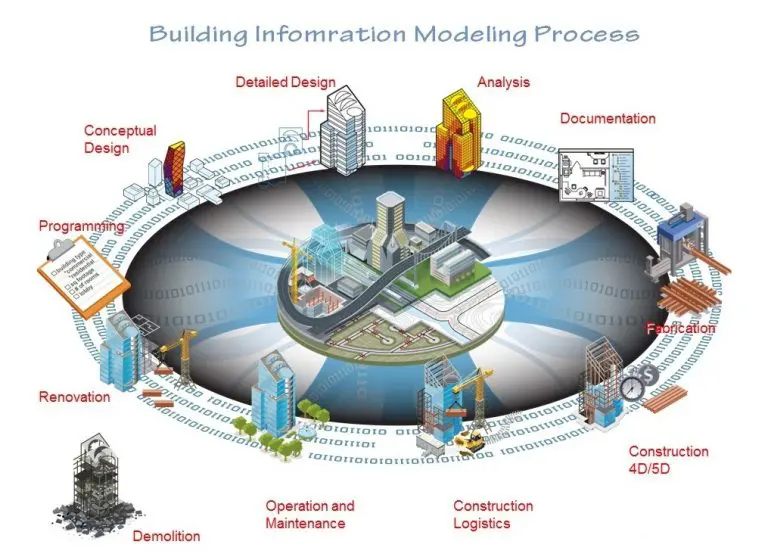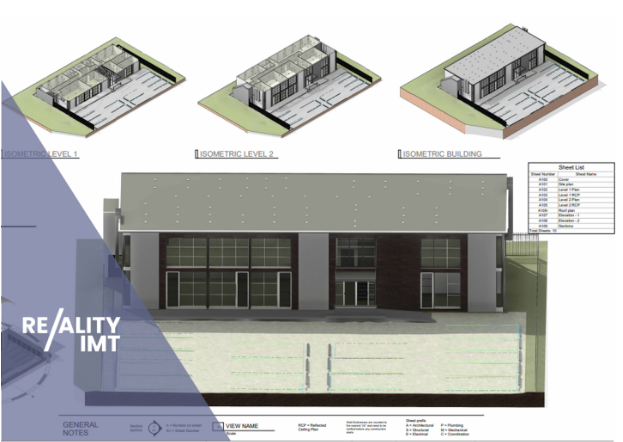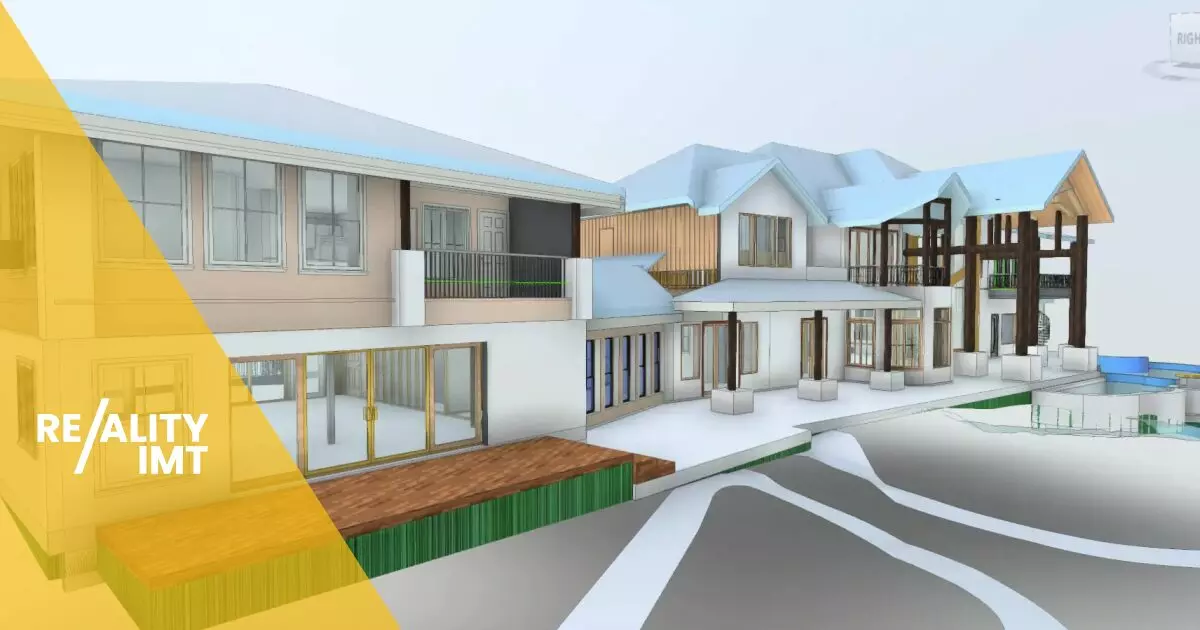As-Built BIM, A Dive Into Advanced Technology
Proper information management has always been a key influencer in determining the success of a project. Time and again, BIM is widely helping companies across the globe realize how complex projects can be seamlessly managed, but how does BIM help with an existing structure? let’s start out by defining BIM then as-built and tie the two together.
What is BIM?
BIM or Building Information Modeling is the process by which information is generated, processed, managed and shared across project stakeholders. BIM helps organizations maintain clarity and transparency among project members, which lowers the frequency and possibility of mistakes, reduces human error, and is able to successfully avert project conflicts.
Building Information Modeling has been mostly accepted in the construction industry. As a matter of fact, 50% of the total construction industry relies on BIM for their regular operations. However, more and more organizations are now keen on incorporating BIM within their system and thus design and construction companies are more likely to adapt to this inclusion. To take it a notch higher, many educational institutes are focusing on BIM, as a crucial part of the engineering curriculum.
What is an As-Built?
When a building or a structure is built, it follows design drawings, however, in real life, nothing is ever built exactly how it was originally designed and that could be due to multiple factors including site conditions, clashes that appeared once the structure is built, scheduling or budgeting constraints, etc. An As-built drawing is a CAD drawing showing the exact elements of an existing structure. simply, It is a blueprint of an existing building.
What is an As-Built BIM?
An As-Built BIM is a Building Information Model of an existing building. Depending on the category, It could show exact location of structural, mechanical, plumbing and sometimes electrical members. The as-built model shows exact geometry and dimensions of all visible elements at the time of the survey. When you think of BIM, it is always assumed that you will be working in 3D so an as-built BIM is always a three dimensional model of an existing building.
Over the last few years, As-built Building Information Modeling has been gradually making its way in commercial renovations and the construction industry. This led to an increase in awareness and more improved operations in these sectors. Let’s see how.
As-Built BIM saves you money
We all understand that change orders could stop an entire project and result in monetary and schedule losses, especially when they come up in the mid-construction phase. With the help of As-built BIM, you would be able to minimize these change orders right at the planning phase since an accurate model of the existing building is used as the benchmark for all renovation work to come, typically leading to a minimum of 20% in cost reduction.
Saves time
Time is money, and this statement is most justified when it comes to the construction industry. As-built BIM helps your company save money in two ways. First, as we have already discussed, it reduces the number of change orders needed. Second, it increases collaboration and coordination among project team members, and makes the process more efficient. When the entire interior design team is looking at the 3D as-built of a building, they can all add their comments and collaborate on ideas using BIM 360
Enhanced Client Presentation
Once a project is documented, the Architect can use BIM to communicate conceptual renovations design to the owner to ensure scope alignment. Clients can walk through their space virtually on a pc, look around and comment on the architect’s preliminary design. This process is so crucial that it eliminates scope creep, and enables clients to fully visualize the space before it is renovated,
Collaboration and Interoperability
Just like BIM, As-Built BIM essentially comprises of two important concepts, collaboration and interoperability. Both revolve around the use, reuse, and management of information across different sectors.
For any project to be successful, collaboration is an essential aspect. Each team member needs to know the role of the others in the group. Maintaining a certain transparency and clarity within the team can avoid future disagreements that may cause project delays. This is what BIM helps you achieve.
In today’s day and age, another cause for trouble for team members is the use of different data sets in CAD models, better known as interoperability. Incorporating an interoperable As-Built BIM in a project is crucial to help the team become more conducive and efficient. the IFC BIM models are a good example of that.
Overall, focusing on aspects of collaboration and interoperability, As-Built BIM aims to use time more efficiently, reduce waste of materials, increase channels for communication and maintain progress at every stage.
Future Developments in As-Built BIM
As-Built Building Information Modeling has indeed taken the architectural and construction industry by storm. The simplification of the processes requires a combination of standards. These include graphic presentation standards, drafting standards, procedure requirements, and requirements for collaboration and information exchange.
The U.S. Institute of Building Documentation has developed guidelines that enable professionals in the Architectural, Engineering, Construction, Owner (AECO) Industry to specify and articulate, with a high level of clarity, the accuracy and means by which to represent and document existing building conditions.
What lies in the future? As discussed, As-Built BIM works towards simplifying processes within an organization, especially in Architectural, Engineering and Construction. Let us see what the future holds for this technology.
- Companies that make use of Building Information Modeling will deliver work faster and more efficiently.
- Building Information Modeling of existing structures will help construction companies save money and make more money at the same time. This rise in the economy will enable entrepreneurs to have a wider range of suppliers to work with.
- With better information management, a more structured legal framework is likely to emerge from the companies’ perspective.
- Asset owners will gradually be looking for Facilities Management models for their existing assets. This will lead to an increased demand for BIM As-Builts.
Winding Up…
Building Information Modeling of existing buildings should be introduced to your company, faster than you think. The sooner your organization is able to adapt to this technology and integrate it into the workflow, the more streamlined your renovation projects will become.
While a broad section of the market has faith in Building Information Modeling, and believes that it is a consequence of IT development, there is another section that believes Building Information Modeling is a long way from making its way in the industry completely. This might be attributed to a lack of technical and professional expertise in handling such advanced technology.
However, considering the fact that Building Information Modeling is the future of information management in the AEC industry, its pros outweigh the cons and it is en route to establishing itself as the new standard.
Now is the right time to get an edge over your competitors and invest in the right direction by getting access to Building Information Modelling services and industry experts. Reality IMT has been helping companies get accurate as-built using 3D laser scanning technology, and can deliver ready-to-use BIM of existing structures in Revit, 3D CAD, and other popular extensions. Contact us today to learn more!



